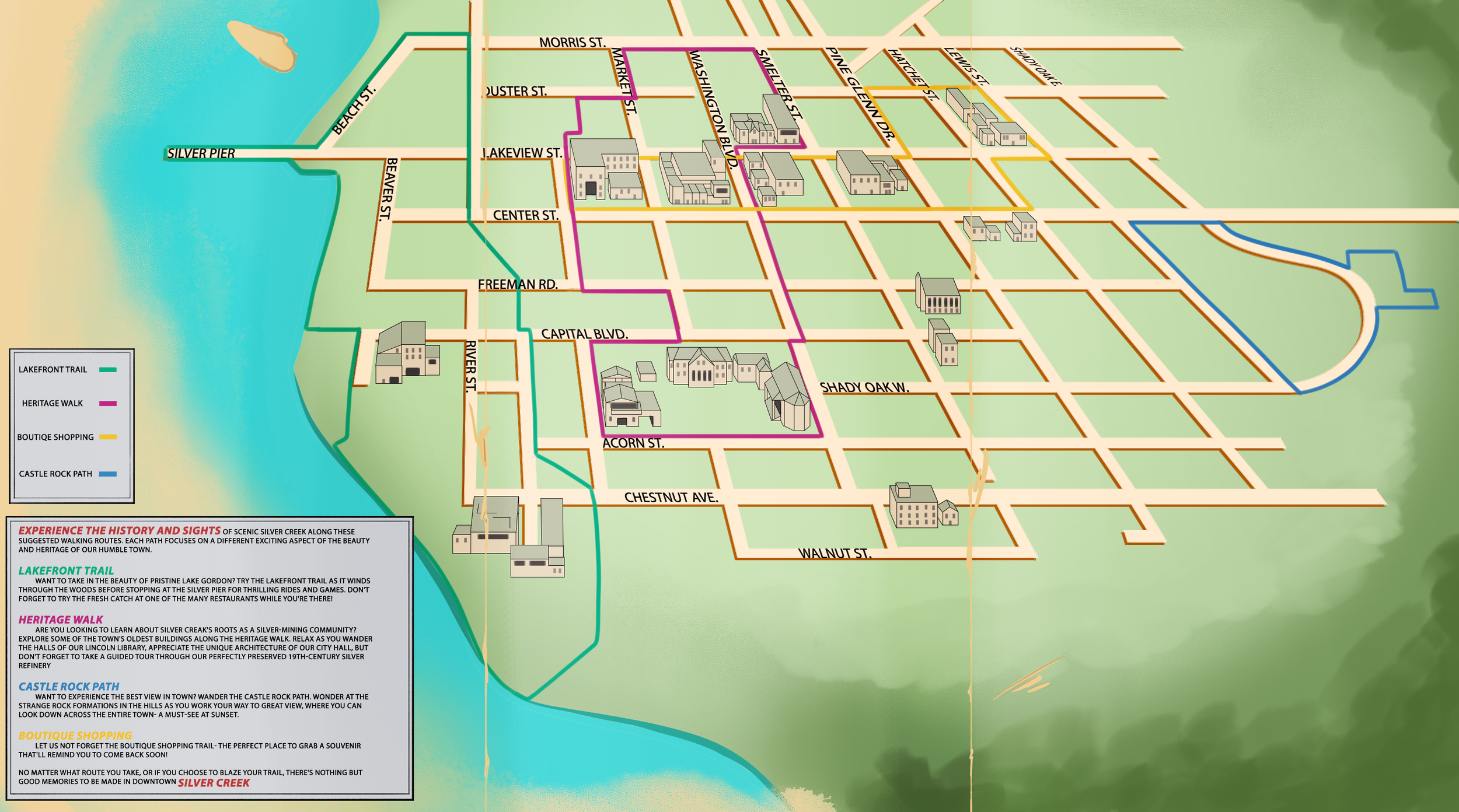Kohl Meek - Concept Artist
kohlmeek@gmail.com | Resume
Silver Creek
Manage a survivor's inventory in real-time as they brave a horror-filled world of occultism in the small Oregon community of Silver Creek. Balance the benefits and costs of equipment placement to maximize their effects without making them too hard to reach. When mere seconds separate life and death, a misplaced item might spell your doom.
Oh, Silver Creek. It's the only creek for me, let me tell you. It's the closest I've gotten to working on my dream project. I was working with a small team after I pitched the concept to some game dev friends and found myself as the design lead on the team. I was responsible for the game's design, art, animation, and writing. I still absolutely adore this project. It was an enormous learning experience for the whole team.
Documents
Gameplay
The game was a real-time puzzle/horror Roguelike in which you survive expeditions into a small Oregon town taken over by the occult. The player's actions would be taken automatically with limited direct control from the player. The player had to set them up for success by efficiently arranging the gear in their backpacks and choosing what to hold onto and abandon. Notably, the character retrieving an item from their bag takes time as enemies close in, and the further toward the bottom of the bag the item is, the longer it takes. I still believe this, paired with a slew of unique item effects to complicate the process further, can make a nerve-wracking and rewarding gameplay loop.
Writing
I also loved the flavor of the game. It combined inspiration from my horror favorites, the excellent Audio Drama "The Magnus Archives," The SCP Foundation, and the general feeling of urban legends, campfire stories, and American cryptids. I still occasionally write shorts from the setting to this day.
Art
Regarding art direction, we wanted a natural tactile feel and decided to shoot for diegetic UI wherever possible. To that end, I designed the main UI to look like a desktop/workbench and the world map like a tourist's trifold town map. We eventually planned to add variants of each based on the players' specific in-game location.
What I Learned
Eventually, we agreed that continuing the project wouldn't be financially viable, but I still got something out of it. The big lessons here were about understanding the scope of a project. On a small team like this, it's better to take a more conservative approach to roadmaps and time management. This project also inspired me to take a more active role in more aspects of development and is a direct precursor to my working on my solo project, HELLEVATORS.
Contact
For any questions you can contact me here:
kohlmeek@gmail.com
Santa Cruz, Ca





